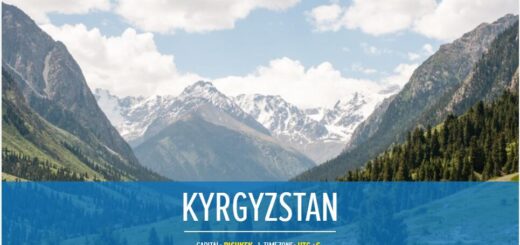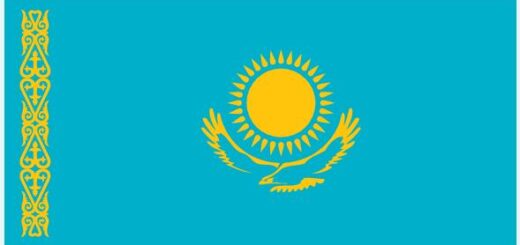State Structure and Political System of Kyrgyzstan
Kyrgyzstan is a sovereign, unitary, democratic republic built on the principles of a legal secular state. Since May 1993, the Constitution adopted by the XII session of the Supreme Council of the Republic, with amendments and additions of February 1996, October 1998, December 2001, was in force. Check equzhou for political system of Kyrgyzstan.
In administrative-territorial terms, Kyrgyzstan is divided into 7 regions (Batken, Jalal-Abad, Issyk-Kul, Naryn, Osh, Talas, Chui). The regions include 39 districts, 21 cities, 29 urban settlements, 1802 rural settlements. The largest cities are Bishkek, Osh – cities of republican subordination, Jalal-Abad, Talas, Tokmok, Karakol, Kant, Uzgen.
The principles of state administration are the supremacy of the power of the people, represented by a popularly elected head of state – the president; division of state power into legislative, executive, judicial branches; the responsibility of state bodies to the people and the exercise by them of their powers in the interests of the people; delimitation of the functions of state power and local self-government.
The highest body of legislative power is the Zhogorku Kenesh (Parliament), which exercises legislative power and control functions within its powers. According to the Constitution of 1993, the Jogorku Kenesh consisted of two chambers: the Assembly of People’s Representatives (45 people), working in sessions and elected on the basis of representation of territorial interests, and the permanent Legislative Assembly (60 people), elected on the basis of representation of the entire population of the country. The 2003 constitutional law introduces a unicameral Jogorku Kenesh (75 deputies), elected for 5 years in single-mandate territorial constituencies (previously there were also elections based on party lists) and working in sessions. The right to nominate candidates belongs to political parties and citizens through self-nomination. Deputies are elected on the basis of universal equal and direct suffrage by secret ballot. The powers of the Jogorku Kenesh, elected in 2000 for a term of 5 years and in force at the time of the adoption of the Constitutional Law in February 2003 (Chairman of the Assembly of People’s Representatives – A.A. Burubaev, of the Legislative Assembly – A.E. Erkebaev), can be terminated ahead of schedule.
The supreme body of executive power is the government, headed by the prime minister (since May 30, 2002 – N.T. Tanaev) and also including vice prime ministers, ministers, and chairmen of state committees. The prime minister is appointed by the president with the consent of the majority of deputies of the Jogorku Kenesh (in the Constitution of 1993 – with the consent of the Assembly of People’s Representatives). The structure of the government, at the proposal of the prime minister, is determined by the president and approved by the Jogorku Kenesh (according to the Constitution of 1993, this was the prerogative of the president). The Government in its activities is responsible to the President and accountable to the Jogorku Kenesh within the limits provided for by the Constitution. Check homeagerly for democracy and human rights of Kyrgyzstan.
The President of Kyrgyzstan is the head of state, the highest official, a symbol of the unity of the people and state power, the guarantor of the Constitution, the rights and freedoms of man and citizen. The President is elected for a term of 5 years, the same person cannot be elected for more than 2 terms in a row. A citizen of the Kyrgyz Republic not younger than 35 and not older than 65 years old, who knows the state language and has lived in the country for at least 15 years, can be elected President.
The current president, Askar Akaevich Akaev, was first elected president of Kyrgyzstan by the Supreme Council of the Kyrgyz SSR on October 27, 1990, confirmed his victory in the popular elections on October 12, 1991, after which he became president of already independent Kyrgyzstan, and then in the elections on December 24, 1995 and October 29, 2000.
Local self-government on the territory of villages, towns, cities is carried out by local communities within the law and under their responsibility through local keneshes and other bodies formed in the manner prescribed by law. Local self-government bodies are responsible to the state for the observance and enforcement of laws, and to the local community for the results of their activities. Deputies of local keneshes are elected for 4 years. The executive power in the territory of administrative units is exercised by the local state administration.
In accordance with the Constitution, political parties, trade unions and other public associations can be created in Kyrgyzstan on the basis of free expression of will and community of interests.
There are 27 officially registered parties, many of which do not have a clear program and are weak organizationally. In the elections to the Zhogorku Kenesh in 2000, the Communist Party of Kyrgyzstan, the pro-presidential Democratic Women’s Party of Kyrgyzstan, the Union of Democratic Forces, which unites the Social Democratic Party of Kyrgyzstan, the Economic Revival Party and the Birimdyk Party, received the largest number of votes.
The Party of Communists of Kyrgyzstan (PKK) and the Social Democratic Party of Kyrgyzstan (SDPK) represent the organized left. The PKK is an opposition party that is the political and ideological successor to the Communist Party of Kyrgyzstan, dissolved in 1991. Without abandoning the main ideological principles of the Communist Party, the PKK made significant changes to its program, taking into account modern realities (in particular, it advocates a diversified economy while maintaining the social orientation of reforms and state control over vital industries, etc.). Counts approx. 25 thousand members. The SDPK represents the interests of that part of the ruling elite that considers the liberal model of development unacceptable for the Kyrgyz society, preferring a model close to Western European democrats. Founded in 1993, it has over 2,000 members and is quite influential.
The right-wing radical nationalist wing of the political spectrum is represented primarily by the Asaba party (national in composition and nationalist in ideology, numbering 500 people), the Erkin Kyrgyzstan Democratic Party (Erk) (the main idea is to search for their own development model, but practice often allows actions that affect the interests of non-indigenous populations).
The most influential liberal-democratic parties are Ata-Meken (Fatherland) (advocating evolutionary actions while maintaining the positive elements of the old system); Party Democratic Movement “Kyrgyzstan” (democratic centrist organization standing in constructive opposition to the government); The Republican People’s Party of Kyrgyzstan (originated from a coalition in support of A. Akaev in the 1991 elections, but is not unconditionally pro-presidential, consistently and skillfully defends the principles of democracy, justice and equality of people). The political life of Kyrgyzstan is characterized not so much by the struggle of parties as by the confrontation between the northern and southern clans, the roots of which go back to the distant past.
3019 public organizations and associations have been registered. Leading business organizations are the Chamber of Commerce and Industry of the Kyrgyz Republic, the Union of Entrepreneurs.
Domestic policy is aimed at building a developed democratic society, the comprehensive development of local self-government as the basis of the life of the state, the protection of human rights, and ensuring interethnic harmony.
The main principles of foreign policy are to ensure and protect the sovereignty and territorial integrity of the country, the formation of favorable external conditions for economic and democratic reforms.
The armed forces are built in accordance with the principle of self-defense and defensive sufficiency. They consist of the Ground Forces, Air Force, Air Defense, National Guard, since September 2002 an independent border service has been operating. The number of the Armed Forces (together with the Ministry of Internal Affairs) approx. 18 thousand people
Diplomatic relations with the Russian Federation were established on March 20, 1992.



